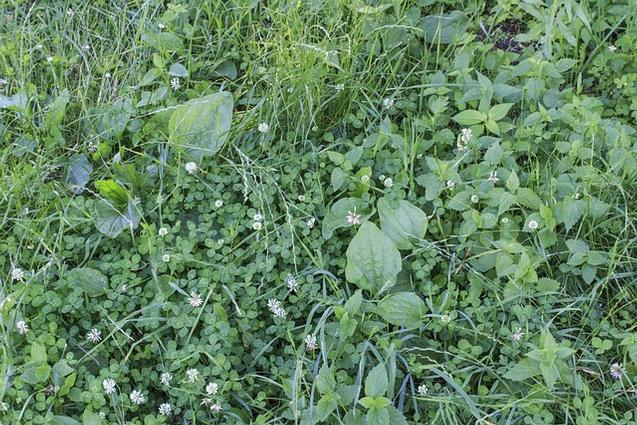How to Treat Fall Weeds

How to Treat Fall Weeds
There is a lot going on in your garden in the fall: it’s when we’re planting bulbs, reseeding our lawns, and even installing new trees and shrubs. But it’s also an ideal time to treat weeds, and addressing weeds in the fall can yield great results throughout the year.
Still, we know how hard it can be to kill weeds. To make things easier, we recommend you correctly identify the weed, use the right weed killer, and treat it at the right time.
Why is Fall a Good Time to Treat Weeds?
While it may seem counterintuitive to treat weeds as we head towards the winter months, the cool fall season is actually the perfect time to apply herbicides. Many common weeds germinate in the fall, and treating them at that time prevents their rapid spread once the warm spring months arrive.
How do I Identify Weeds?
The most important step in treating fall weeds is to first identify them. Weeds fall into one of two categories, grassy weeds and broadleaf weeds. Broadleaf weeds are by definition “weeds that aren’t grasses”, and are generally much easier to eliminate in the lawn. They tend to look different from the surrounding grass and have non-grassy leaves. Grassy weeds, on the other hand, closely resemble the rest of your lawn in structure. These weeds are complex, as most of them have their own specific care.
How do I Kill Broadleaf Weeds?
There are more than one hundred types of broadleaf weeds that grow in the Northern Virginia region. Common examples include clover, dandelion,chickweed, spurge, wild violets, wild strawberry, and hairy bittercress. The best herbicide we recommend for killing weeds in this category is an herbicide called Speed Zone, which you can find in our turf department.
Speed Zone is effective across a wide variety of broadleaf weeds and kills anything that isn’t grass. While directly applying the herbicide is possible, we actually recommend a unique method for optimal application: mix one ounce of Speed Zone and one ounce of a product called Wilt-Pruf in a gallon of water. This mixture allows Speed Zone to kill the weed while Wilt-Pruf, a completely organic surfactant, laminates the herbicide onto the weed and makes the herbicide waterproof. This makes the area safer for kids and pets, it eliminates the risk of rain, it helps the herbicide more thoroughly kill the weed, allowing you to skip the waiting period before putting down grass seed.
How do I Kill Grassy Weeds?
Unlike broadleaf weeds, there isn’t a great “silver bullet” herbicide for grassy weeds. Crabgrass and Nutsedge are best killed by Image All-In-One, Japanese Stiltgrass is best treated by Bio Advance’s Bermudagrass Control (or Acclaim), and Poa annua and Poa trivialis are both eliminated by improving their environment. Still, though, we recommend you also combine these treatments with Wilt-Pruf for the benefits described above.
When is the best time to apply Herbicides?
Sometimes the secret to using an herbicide is to make sure the conditions are right when we are spraying. Herbicides work best when applied first thing in the morning with morning dew and when your weeds are healthy and growing. Make sure we aren’t in a drought when applying herbicides. If the ground is dry you increase the likelihood that you kill the good grass, and you are less likely to kill the weeds.
What if I keep treating weeds and they keep coming back?
If you have a weed you can’t kill, bring a sample to one of our turf experts for an identification and a plan to eliminate it from your yard. We’ll help you troubleshoot your current treatment plan and find ways to improve it.
-
12507 Route 29, VA 22030